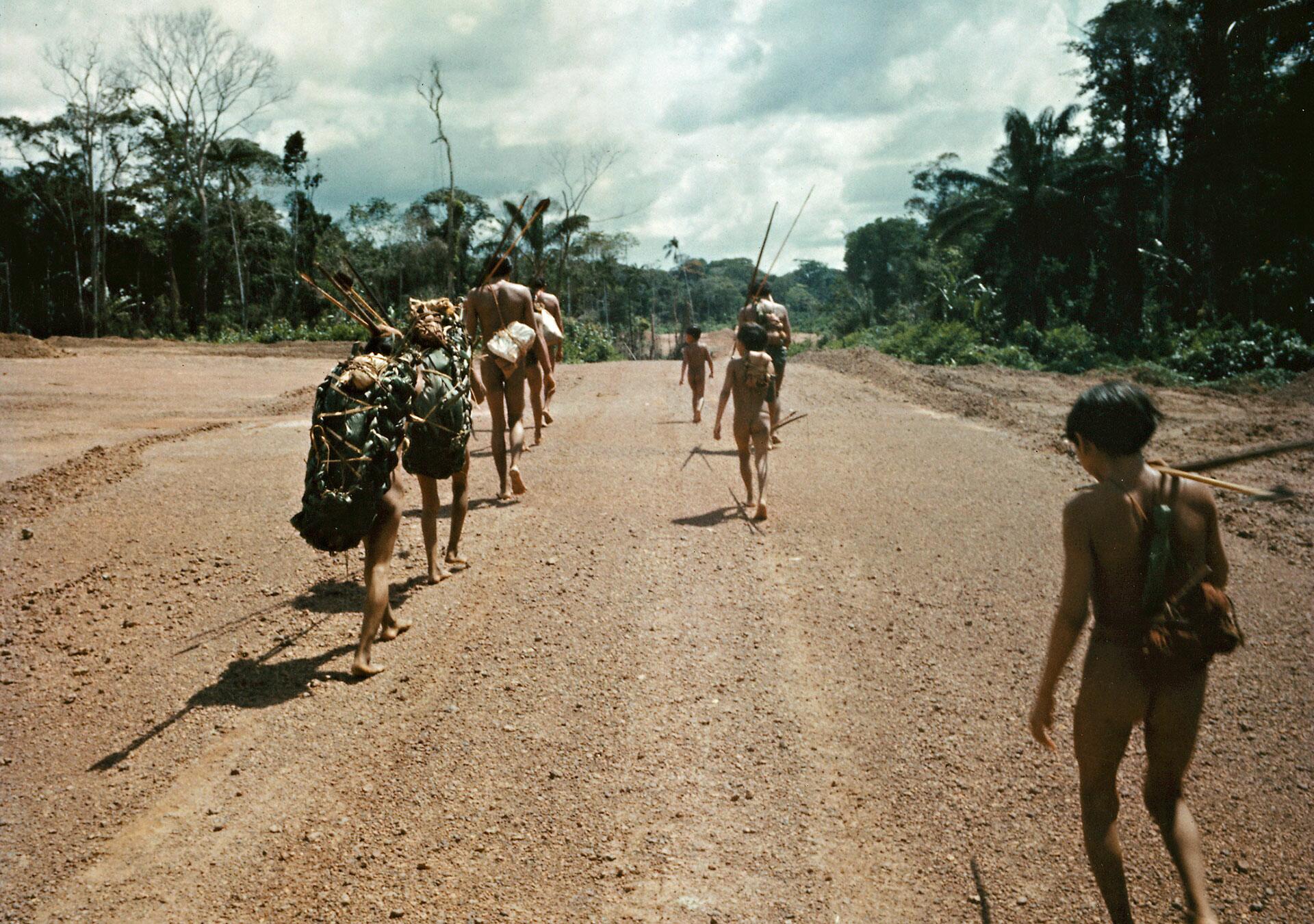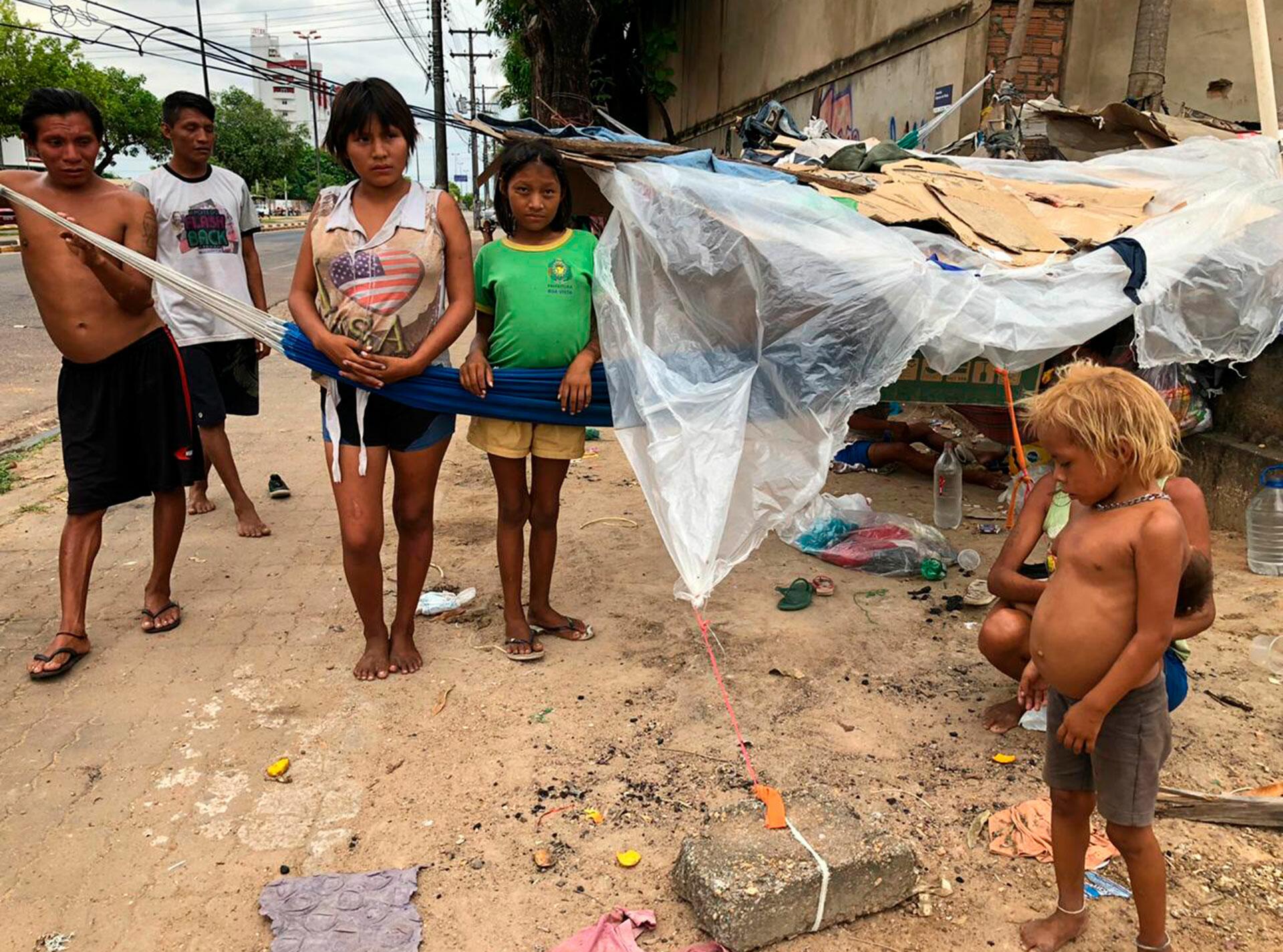On the night of November 11, Ana Yanomami Xexana, a Yanomami woman and mother of a baby, was murdered in Boa Vista, capital of the Amazon state of Roraima. Her killers, two unidentified men, rode their bicycles past the encampment where Ana, who had been preparing to return to her community in the Yanomami Indigenous land, was sleeping surrounded by family members. The men fired a number of shots, two of which hit her in the head and left her baby an orphan. While the speeches at the COP27 climate summit in Egypt call for the protection of the Amazon Forest, in the region itself there is only spilt blood, and widespread indifference.
The murder of this Yanomami mother did not begin on scruffy Avenida Venezuela in Boa Vista. It started in the seventies, when another highway, known as the Perimetral Norte (the North Perimeter), ripped through the territory where her ancestors lived. It started when over a fifth of her people, the Ỹaroamë, were killed by infectious diseases brought by construction workers. Her murder began when the construction of the highway caused two measles epidemics, in 1974 and 1976-77, and brought continuous outbreaks of flu, malaria and other diseases, wiping out entire communities. That was the first time the world ended for her community. Ana Yanomami Xexana, murdered by two shots to the head simply because she was there, and she was an indigenous woman, was one of the survivors – until she was gunned down.
Ana was part of the Xexena community, a small group that speaks the Ỹaroamë language, one of six which make up the Yanomami language family, and which in 2018 was spoken by only 359 individuals. The community lives in the Ajarani region on the eastern edge of the Yanomami Indigenous Land. The Perimetral Norte (also known as the BR-210) was designed to slice across the Amazon, starting from the state of Amapá, on the shores of the Atlantic Ocean, and stretching all the way to the state of Amazonas, on the Brazil-Colombia border. It was another of the development projects proposed by Brazil’s corporate-military dictatorship, which governed the country from 1964 to 1985, and which viewed the Amazon region as empty land to be occupied by “progress”. For the Yanomami, this progress meant the brutal disruption of their way of existing in the world. A point of no return to how they had lived before.
But the origins of the murder of this Yanomami mother stretch even further back. At the beginning of the 20th century, the Ỹaroamë, who lived between the Mucajaí and Catrimani rivers, were a populous group, and from the outset extremely resistant to white people’s attempts to contact them. But from 1930 onwards, expeditions by Brazil’s Boundary Demarcation Commission and those seeking to exploit the forest, such as rubber tappers, hunters of wild animals, and fishermen, began to probe deeper into their lands, bringing with them the first epidemics.
Next it was the missionaries who sought to establish contact with the Ỹaroamë. In 1957, missionaries from the Unevangelized Fields Mission (today known as MEVA) attempted to contact the Ỹaroamë by dropping fishing hooks and other objects onto their communities from small planes, only to abandon their plans when they saw the indigenous people aiming bows and arrows at them. Another attempt to approach the Ỹaroamë came in 1962, this time by Catholic missionaries from the Consolata Order, who years later would establish a mission in the Middle Catrimani region. The group even managed to open up a small airstrip near the Ỹaroamë villages, but their missionary work in the region failed and the project was discontinued three years later. Consolata priest Silvano Sabatini’s reports from the period describe the relative isolation of the Ỹaroamë, who used tools made of bamboo, stone axes and clay pots.

The Perimetral Norte highway construction created deserts in the middle of the green forest. And the road created a form of ‘highway nomadism’. Photo: Bruce Albert (1975)
A decade later, however, even Ỹaroamë resistance would not be enough to stop the violence of the dictatorship. The construction of the Perimetral Norte highway, which began in 1973, sliced through Ỹaroamë territory, bringing with it the invasion of enormous numbers of workers and their machinery. Work had begun without any prior consultation with the indigenous people, who were shown no respect during construction, as thousands of trees were cut down, creating deserts in the middle of the green forest. The indigenous peoples’ hunting grounds were destroyed, along with their areas for planting and the dwelling places of the spirits contacted by their shamans. The Ỹaroamë were left to live by the side of the road that had split them down the middle.
In just a few short months, thousands of years of tradition were replaced by prostitution, alcoholism and dependence on small change doled out by the road workers: 22% of the Ỹaroamë population was exterminated. Anthropologists Alcida Ramos and Kenneth Taylor describe how just a few years after the road was built the Ỹaroamë were already living a form of “highway nomadism,” walking from one construction camp to another, begging for food, clothes, or rides.
In 1976, when the funding for the megalomaniacal dictatorship project ran out, construction of the Perimetral Norte ground to a halt. In the almost 50 years since, the forest has been reclaiming the space taken from it. The Ỹaroamë, however, have been scarred by the road that destroyed their entire world. They continue to occupy the same land, relatively close to where the road was. But the surviving Ỹaroamë have moved in a different direction to the forest, looking for seasonal farm work or seeking employment in Roraima’s towns and cities.

In Boa Vista, indigenous set up improvised shacks or hang their hammocks from trees at the side of the city’s broad streets, close to fast moving traffic. Photo: Emily Costa/Amazônia Real
Analysis by the geographer Estêvão Senra, based on the 2020 missionary census, estimates that today roughly 40% of Ỹaroamë from the Catrimani region live outside their indigenous land, and exist in a state of constant movement. It is almost as if, having been massacred by the Perimetral Norte, they are bound to forever imitate the event that destroyed their communities. Almost half a century later, they remain highway nomads. Levels of displacement have been intensified by intercommunal conflicts between Ỹaroamë groups, particularly after the 2012 death of a Ỹaroamë man, run over in Boa Vista. When his body was returned to the community, his death was understood as an act of aggression by other Ỹaroamë groups, triggering a lengthy cycle of deaths and revenge between villages. For the Yanomami no death is natural, and each one must be avenged.
Another factor that has intensified the migration of the Ỹaroamë to the cities has been the inclusion of indigenous peoples in Brazil’s social benefit programs. Since the main recipients of such benefits, such as pensions, maternity payments, or the Auxílio Brasil (Brazil Aid) government welfare program, are women, especially mothers, and the elderly, many Ỹaroamë groups set out on foot from their villages, located near the eastern border of the indigenous land. From there, they walk to the cities of Caracaraí and Mucajaí, where they sometimes settle, or move on to neighboring villages. Or they aim for the state capital of Roraima, Boa Vista, hiking 141 kilometers along the side of the BR 174 highway, a journey of around six days, made under the equatorial sun, loaded down with children, hammocks, clothes, pots, and products to sell in the city, such as brushes or handicrafts. In Boa Vista, they often set up improvised shacks or hang their hammocks from trees at the side of the city’s broad streets, close to fast moving traffic.
Boa Vista is the opposite of the forest. The capital of Brazil’s most indigenous state, its most famous monument is a statue of a prospector. Much of the illegal mining activities in Roraima take place within Yanomami Indigenous Land, located in the western part of the state. Since 2016, criminal mining activity has grown exponentially, growing at an even faster pace since the election of Brazil’s extreme right-wing president Jair Bolsonaro (it has increased by more than 250% in the last three years, according to figures from the Hutukara Yanomami Association). With Bolsonaro in power, impunity has become almost the rule, while prejudice against indigenous people, such as the Yanomami groups in the cities, has become more widespread.
The recent victory of Luiz Inácio Lula da Silva in Brazil’s presidential election, however, is a chance to rewrite history. On a number of occasions during his campaign, Lula, as he is better known, stated he would not permit mining on indigenous lands. The election numbers in Roraima, however, where Bolsonaro obtained 76.08% of the vote, reveal the tension between the indigenous and non-indigenous populations. Hatred is on the rise in the state, where episodes of race-related violence are escalating, making the Yanomami even more of a target. For residents of the city, groups like the Ỹaroamë are no more than beggars.
Indigenous people are often viewed by white Brazilians through a lens of poverty, and seen as an obstacle to accessing the mineral wealth of their territories. In other words, beggars sitting on a pile of what is most valuable to non-indigenous eyes: gold. Such a situation is hard to stomach for the “people of the markets,” as whites are described by the shaman Davi Kopenawa. For the Ỹaroamë and other Yanomami groups, the value lies in the forest itself, in living in a relationship with all other beings. Before the whites invaded their territories, gold meant nothing. Such views of what wealth is, or where, and in what, value is to be found, are irreconcilable, but hardly equivalent: one seeks to destroy the forest and lead the planet to climate collapse, while the other simply wants to live.
The two bullets buried in the head of Yanomami mother Ana Yanomami Xexana were made of all this. What is done, or not done, with her killers will determine whether life – of the forest, and of Yanomami mothers – will be possible, or whether the end of the world is coming for everyone.
Ana Maria Machado. Indigenist, anthropologist and Yanomam language translator, who has worked with the Yanomami people since 2007
Translated by Mark Murray





